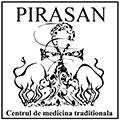A frequent cause of female fertility and sterility disorders, hydrosalpinx is a disease of the genital system, of the salpingites’ category. The uterine tubes are obstructed by the accumulation of a serous or clear fluid which doesn’t let the spermatozoids fecundate the ovule, by blocking their acces.
The process causes fluid to accumulate in both uterine tubes. The fluid may be harmful to a possible pregnancy; that is why fertilization procedures can be applied only after the disease itself has been cured.
Causes
Among the most frequent causes are the recurrent infections of the uterine tubes. Therefore, a woman must have a proper hygienic conduct in order to treat or to prevent the relapse of certain infectious processes. At the same time, the sexual intercourse must be protected from possible infections, especially if there is a known sensitivity and predisposition towards infections of the genital apparatus.
Factors that trigger hydrosalpinx are the following:
- Clamydia and gonorrhea or other sexually transmitted diseases. In time, they may trigger residual effects that will bias recurrent infections of the uterine tube.
- An excess accumulation of endometrial tissue in the area of the uterine tubes (a process developed in endometriosis).
- Various complications following surgical procedures in the area of the reproductive apparatus or in the abdominal area.
- Various consequences of repeated voluntary or spontaneous abortions.
- Pelvic inflammatory disease
- Endocrine activity disorders that decrease the immunity of the genitourinary apparatus
- Repeated urinary infections, inappropriately treated
- Recurrent adnexites, inappropriately treated.
Treatment
There are a lot of women who have suffered from adnexites in the course of their lives, of infections in the area of their uterine tubes or of other infections that are deemed to trigger hydrosalpinx. These infections, however, are not signs of this disease. Therefore, what causes the accumulation of fluid?
The specialists saw that the respective accumulation forms when the genital recurrent diseases cause inflammation and repeated lesion of the fimbriae (a tissue area with aspect of fringe, located between ovary and the uterine tubes, with role in the ovule fecundation process). When regenerating, the fimbria grows faulty in structure, which will obstruct the uterine tubes and will trigger the accumulation of fluid.
Depending on the stage of the disease, the traditional treatment is associated with surgical intervention to remove the very large accumulations of fluid. In these situations, the diameter of the uterine tubes assumes a saclike aspect; first of all, the uterine tubes must be relieved by a surgery as least invasive of possible.
Once the diameter of the uterine tubes has been restored, the traditional medicine specialist will try to prevent the relapses, to restore the structure of the genital apparatus and to normalize the activity of the endocrine system.
In the case of the female patients with smaller accumulations of fluid, the physician tries by traditional treatment to eliminate the accumulated fluid, to regenerate the structure of the uterine tubes, to recover the structure of the fimbriae and to restore the correct function of the reproductive and endocrine system.
Most of the female patients who asked for traditional treatment for this disease wanted to conceive a child, sterility being one of the symptoms frequently associated with hydrosalpinx. Every time my advice was that they should start conceiving only after their hydrosalpinx has been confirmed cured, in order to avoid any complications in the development of the fetus and in order not to jeopardize the mother’s health, as well.

